-
 Bitcoin
Bitcoin $87,637.3009
3.62% -
 Ethereum
Ethereum $1,619.6345
2.40% -
 Tether USDt
Tether USDt $0.9997
-0.02% -
 XRP
XRP $2.1149
2.87% -
 BNB
BNB $602.1762
2.09% -
 Solana
Solana $137.8253
0.20% -
 USDC
USDC $0.9996
-0.04% -
 Dogecoin
Dogecoin $0.1607
4.00% -
 TRON
TRON $0.2420
-1.26% -
 Cardano
Cardano $0.6419
4.18% -
 Chainlink
Chainlink $13.4026
2.77% -
 Avalanche
Avalanche $20.3782
4.92% -
 UNUS SED LEO
UNUS SED LEO $9.0084
-3.44% -
 Stellar
Stellar $0.2566
6.15% -
 Toncoin
Toncoin $3.0111
1.38% -
 Shiba Inu
Shiba Inu $0.0...01251
1.78% -
 Sui
Sui $2.2326
5.85% -
 Hedera
Hedera $0.1696
4.46% -
 Bitcoin Cash
Bitcoin Cash $337.7284
0.90% -
 Polkadot
Polkadot $3.8972
1.25% -
 Litecoin
Litecoin $79.9963
5.10% -
 Hyperliquid
Hyperliquid $18.0042
2.62% -
 Dai
Dai $0.9999
0.00% -
 Bitget Token
Bitget Token $4.4458
2.27% -
 Ethena USDe
Ethena USDe $0.9992
-0.01% -
 Pi
Pi $0.6361
1.22% -
 Monero
Monero $215.1319
-0.70% -
 Uniswap
Uniswap $5.4058
3.91% -
 Pepe
Pepe $0.0...07908
6.59% -
 Aptos
Aptos $5.1454
2.71%
Bitcoin Exchange with the highest leverage multiple in 2025
In 2025, leverage Bitcoin trading offers high returns but carries significant risk; researching reputable exchanges with the highest leverage multiples, while prioritizing regulatory compliance and robust security, is crucial.
Mar 18, 2025 at 02:55 pm
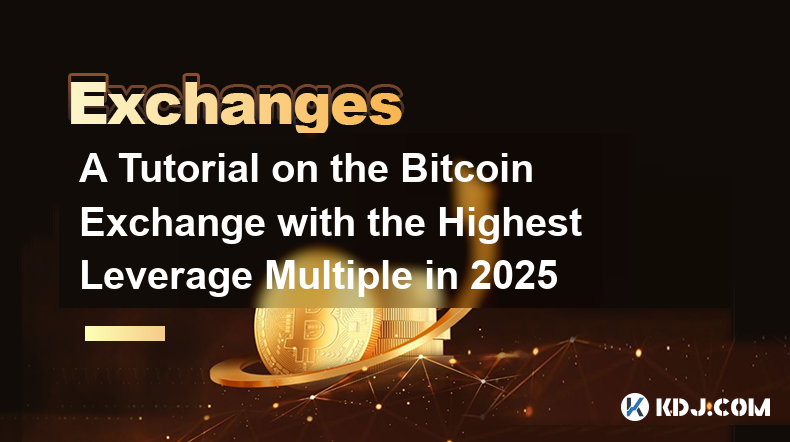
Increased Volatility Exposure: Bitcoin is already a highly volatile asset. When high leverage is applied, even small price fluctuations can lead to substantial gains or losses. For instance, a 1% price movement against a position with 100:1 leverage can result in a 100% loss of the initial investment.
Margin Calls: Exchanges require traders to maintain a certain level of margin in their accounts. With high leverage, a small adverse price movement can quickly deplete the margin, triggering a margin call. If the trader fails to meet the margin call, the exchange may liquidate the position, resulting in significant losses.
Online Cryptocurrency Forums: Platforms like Reddit's r/CryptoCurrency and Bitcointalk are excellent sources of information. Traders often share their experiences and insights about different exchanges, including the leverage options available. You can search for threads discussing the highest - leverage Bitcoin exchanges in 2025. Look for recent posts as the cryptocurrency landscape is constantly evolving, and new exchanges or changes in existing ones occur frequently.
Cryptocurrency Review Websites: Websites such as CoinMarketCap, CoinGecko, and CryptoCompare not only provide information about the prices and market capitalizations of various cryptocurrencies but also offer reviews and comparisons of different exchanges. They often include details about the leverage ratios offered by different platforms. Pay attention to the user reviews and ratings on these sites, as they can give you an idea of the exchange's reliability and user - friendliness.
Exchange Websites: Visit the official websites of the top - ranked exchanges identified through your initial research. Navigate to their trading or derivatives sections, where you will find information about the available leverage options. Some exchanges may offer fixed leverage ratios, such as 50:1 or 100:1, while others may have a more flexible range. Make a list of the exchanges and their corresponding maximum leverage ratios.
Demo Accounts: Many exchanges offer demo accounts that allow you to practice trading with virtual funds. Sign up for demo accounts on the exchanges you are considering. This will give you a hands - on experience of how the leverage works on their platforms. You can test different trading strategies and observe how the leverage affects your positions without risking real money.
Regulatory Compliance: In 2025, regulatory scrutiny of cryptocurrency exchanges has increased in many regions. Ensure that the exchange you choose is compliant with relevant regulations. A regulated exchange is more likely to operate in a transparent and secure manner. Check if the exchange is licensed in its jurisdiction of operation. Some well - regulated exchanges may have limitations on the leverage they can offer due to regulatory requirements, but they provide a higher level of safety for your funds.
Security Features: Look for exchanges that have robust security measures in place. This includes features such as two - factor authentication (2FA), cold storage for a significant portion of user funds, and regular security audits. A secure exchange will protect your trading capital and personal information from potential hacks and frauds. You can research the exchange's security history and any past security incidents to assess its reliability.
Visit the Exchange Website: Once you have identified the Bitcoin exchange with the highest leverage multiple that meets your requirements, go to its official website. Look for the "Sign Up" or "Register" button, usually located at the top - right corner of the homepage.
Provide Personal Information: You will be required to fill out a registration form. This typically includes your name, email address, and creating a strong password. Some exchanges may also ask for additional information such as your country of residence and phone number for verification purposes.
Agree to Terms and Conditions: Read the exchange's terms and conditions carefully. This document outlines the rules and regulations governing your use of the exchange, including the trading terms, fees, and any limitations or liabilities. Make sure you understand and agree to these terms before proceeding.
Identity Verification: Most exchanges in 2025 require identity verification as part of their anti - money laundering (AML) and know - your - customer (KYC) procedures. This usually involves uploading a copy of a government - issued photo ID, such as a passport or driver's license. Some exchanges may also ask for a proof of address, such as a recent utility bill or bank statement.
Document Submission: Follow the instructions provided by the exchange to submit your verification documents. The exchange may have specific requirements regarding the format and quality of the documents. Make sure the information on the documents is clear and legible.
Verification Timeframe: The verification process can take anywhere from a few hours to several days, depending on the exchange and the volume of verification requests they are handling. During this time, you may not be able to access all the trading features, including high - leverage trading. Be patient and check the status of your verification regularly.
Cryptocurrency Deposits: Most Bitcoin exchanges support deposits in various cryptocurrencies. To deposit Bitcoin or other cryptocurrencies, navigate to the "Deposit" section of the exchange. You will be provided with a unique wallet address for the cryptocurrency you want to deposit. Copy this address and initiate a transfer from your external cryptocurrency wallet. Make sure to double - check the address to avoid sending funds to the wrong destination.
Fiat Currency Deposits: Some exchanges also allow you to deposit fiat currencies such as USD, EUR, or GBP. This can usually be done through bank transfers, credit/debit card payments, or third - party payment processors. The process for fiat currency deposits may vary depending on the exchange and your location. For bank transfers, you will need to provide your bank account details and follow the instructions provided by the exchange. Credit/debit card deposits may be subject to additional fees and may have certain restrictions due to regulatory concerns.
Minimum and Maximum Deposits: Each exchange has its own minimum and maximum deposit limits. These limits can vary depending on the deposit method and your account verification level. For example, unverified accounts may have lower deposit limits compared to fully verified accounts. Make sure you are aware of these limits before attempting to fund your account. If you need to deposit a large amount, you may need to complete the full verification process and check if the exchange has any procedures for handling high - value deposits.
Log in to Your Account: Once your account is funded and verified, log in to the exchange's trading platform. The trading interface may vary depending on the exchange, but it typically includes a market overview section, order placement panels, and a charting tool.
Find the Bitcoin Trading Pair: Locate the Bitcoin trading pair you want to trade. For example, if you want to trade Bitcoin against the US dollar, look for the BTC/USD trading pair. The trading interface will usually display the current price, bid and ask prices, and trading volume for the selected pair.
Understand the Order Types: Familiarize yourself with the different order types available on the exchange. Common order types include market orders, limit orders, and stop - loss orders. A market order is executed immediately at the current market price. A limit order allows you to set a specific price at which you want to buy or sell Bitcoin. A stop - loss order is used to limit your losses by automatically triggering a sell order when the price of Bitcoin reaches a certain level.
Leverage Selection: Look for the leverage settings on the trading interface. This is usually located near the order placement panel. Select the highest available leverage multiple, but be cautious as high leverage also comes with high risks. Some exchanges may require you to confirm your choice of leverage before placing the order.
Margin Calculation: Understand how the exchange calculates the margin required for your high - leverage trade. The margin is the amount of your own capital that you need to set aside to open a leveraged position. The margin requirement is usually a percentage of the total value of the position. For example, if the margin requirement is 1% for a 100:1 leverage trade, and you want to open a position worth
10,000,youwillneedtohave100 in your account as margin.
Enter the Order Details: In the order placement panel, enter the details of your trade. This includes the type of order (market, limit, or stop - loss), the quantity of Bitcoin you want to trade, and the price (if it's a limit or stop - loss order). Review the order details carefully to ensure they are correct.
Confirm the Order: Once you are satisfied with the order details, click the "Confirm" or "Place Order" button. The exchange will then execute your order according to the specified parameters. If it's a market order, it will be filled immediately at the best available price. If it's a limit order, it will be placed in the order book and executed when the market price reaches your specified level.
Use the Charting Tool: The trading interface usually provides a charting tool that allows you to monitor the real - time price movement of Bitcoin. You can customize the chart to show different time frames, such as 1 - minute, 5 - minute, 1 - hour, or daily charts. Analyze the price trends and patterns to make informed decisions about your position.
Set Price Alerts: Many exchanges offer the option to set price alerts. You can set alerts for specific price levels of Bitcoin. For example, if you have a long position and want to be notified when the price reaches a certain profit target or a stop - loss level, you can set an alert for that price. This will help you stay updated on the market without constantly monitoring the trading platform.
Monitor Margin Level: Keep a close eye on your margin level. The margin level is the ratio of your account equity to the required margin for your open positions. As the price of Bitcoin moves, the margin level will change. If the margin level drops below the exchange's maintenance margin requirement, you may receive a margin call. To avoid this, you can either close part of your position to reduce the margin requirement or add more funds to your account.
Adjust Stop - Loss Orders: Based on the market conditions and your trading strategy, you may need to adjust your stop - loss orders. If the price of Bitcoin is moving in your favor, you can consider trailing your stop - loss order to lock in some profits. If the market becomes more volatile, you may need to widen your stop - loss to reduce the risk of premature liquidation.
Disclaimer:info@kdj.com
The information provided is not trading advice. kdj.com does not assume any responsibility for any investments made based on the information provided in this article. Cryptocurrencies are highly volatile and it is highly recommended that you invest with caution after thorough research!
If you believe that the content used on this website infringes your copyright, please contact us immediately (info@kdj.com) and we will delete it promptly.
- Atok Partners with Bitgert to Advance Infrastructure and Advertising Economy in Web3 World
- 2025-04-21 23:00:13
- Pi Network (PI) Coin Could Be the Next Cryptocurrency to Launch an Exchange Traded Fund (ETF)
- 2025-04-21 23:00:13
- Strategy, the world's largest corporate Bitcoin holder, has purchased 6,556 BTC for $555.8 million
- 2025-04-21 22:55:13
- Bitcoin (BTC) Price Prediction: Arthur Hayes Hints at a Final Opportunity to Buy BTC Under $100K
- 2025-04-21 22:55:13
- Binance Adds ZORA to Spotlight Projects on Binance Alpha Alongside Other Names
- 2025-04-21 22:50:12
- Bitcoin (BTC) Price Prediction: BTC Surges Nearly 5%
- 2025-04-21 22:50:12
Related knowledge
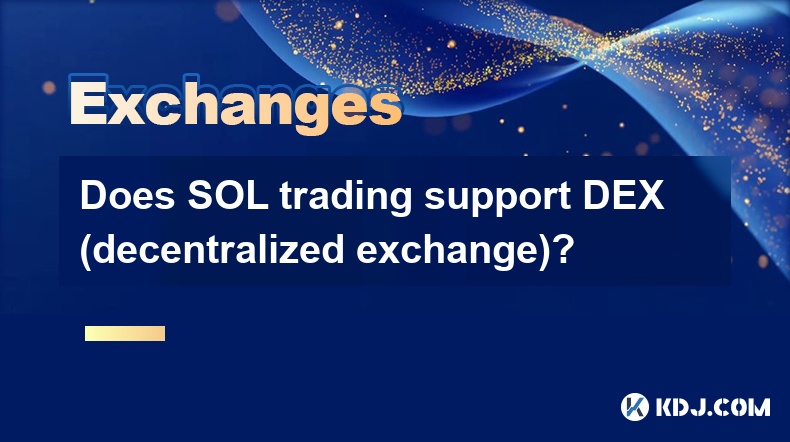
Does SOL trading support DEX (decentralized exchange)?
Apr 19,2025 at 05:21am
Solana (SOL), a high-performance blockchain platform, has gained significant attention in the cryptocurrency community for its fast transaction speeds and low fees. One of the key aspects that traders and investors often inquire about is whether SOL trading supports decentralized exchanges (DEXs). In this article, we will explore this topic in detail, p...

How to choose a reliable SOL trading platform?
Apr 21,2025 at 12:07am
Choosing a reliable SOL trading platform is crucial for anyone looking to engage in trading Solana (SOL) cryptocurrency. With the growing popularity of Solana, numerous platforms have emerged, each offering different features and levels of security. This article will guide you through the essential factors to consider when selecting a reliable SOL tradi...

On which platforms can SOL be bought and sold?
Apr 21,2025 at 10:22am
Solana (SOL) is a popular cryptocurrency known for its high transaction speeds and low fees, making it a favored choice among crypto enthusiasts. If you're looking to buy or sell SOL, there are several platforms where you can do so. In this article, we will explore the various platforms that support the trading of SOL, ensuring you have a comprehensive ...
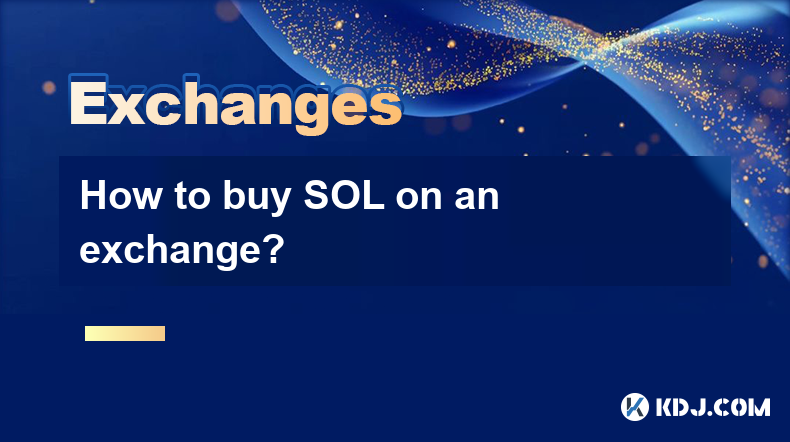
How to buy SOL on an exchange?
Apr 20,2025 at 01:21am
Introduction to Buying SOL on an ExchangeSOL, the native cryptocurrency of the Solana blockchain, has garnered significant attention in the crypto world due to its high throughput and low transaction costs. If you're interested in adding SOL to your investment portfolio, buying it on a cryptocurrency exchange is one of the most straightforward methods. ...
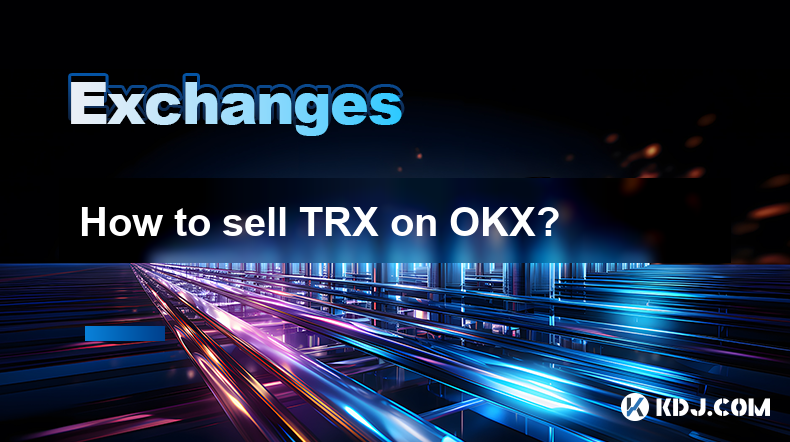
How to sell TRX on OKX?
Apr 18,2025 at 11:07pm
Selling TRX on OKX is a straightforward process that can be completed in a few simple steps. This article will guide you through the entire process, ensuring that you understand each step thoroughly. Whether you are a beginner or an experienced trader, this guide will help you navigate the OKX platform with ease. Preparing to Sell TRX on OKXBefore you c...
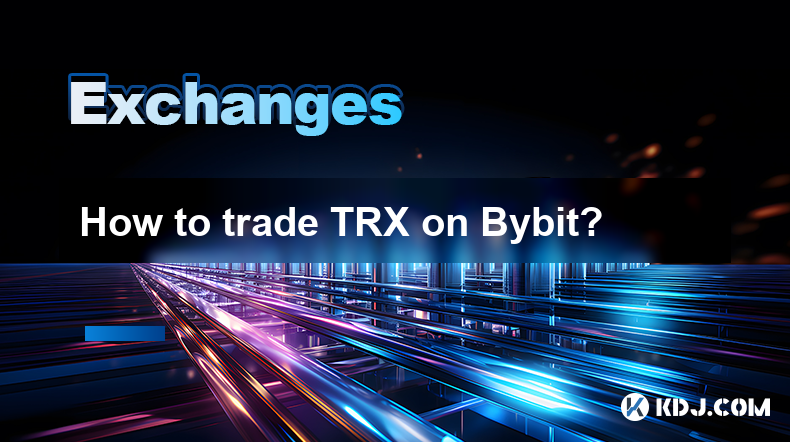
How to trade TRX on Bybit?
Apr 20,2025 at 04:15pm
Trading TRX on Bybit can be an exciting venture for both new and experienced cryptocurrency traders. Bybit, known for its robust trading platform and user-friendly interface, offers a variety of features that can help you trade TRX effectively. In this guide, we'll walk you through the essential steps and tips to successfully trade TRX on Bybit. Setting...

Does SOL trading support DEX (decentralized exchange)?
Apr 19,2025 at 05:21am
Solana (SOL), a high-performance blockchain platform, has gained significant attention in the cryptocurrency community for its fast transaction speeds and low fees. One of the key aspects that traders and investors often inquire about is whether SOL trading supports decentralized exchanges (DEXs). In this article, we will explore this topic in detail, p...

How to choose a reliable SOL trading platform?
Apr 21,2025 at 12:07am
Choosing a reliable SOL trading platform is crucial for anyone looking to engage in trading Solana (SOL) cryptocurrency. With the growing popularity of Solana, numerous platforms have emerged, each offering different features and levels of security. This article will guide you through the essential factors to consider when selecting a reliable SOL tradi...

On which platforms can SOL be bought and sold?
Apr 21,2025 at 10:22am
Solana (SOL) is a popular cryptocurrency known for its high transaction speeds and low fees, making it a favored choice among crypto enthusiasts. If you're looking to buy or sell SOL, there are several platforms where you can do so. In this article, we will explore the various platforms that support the trading of SOL, ensuring you have a comprehensive ...

How to buy SOL on an exchange?
Apr 20,2025 at 01:21am
Introduction to Buying SOL on an ExchangeSOL, the native cryptocurrency of the Solana blockchain, has garnered significant attention in the crypto world due to its high throughput and low transaction costs. If you're interested in adding SOL to your investment portfolio, buying it on a cryptocurrency exchange is one of the most straightforward methods. ...

How to sell TRX on OKX?
Apr 18,2025 at 11:07pm
Selling TRX on OKX is a straightforward process that can be completed in a few simple steps. This article will guide you through the entire process, ensuring that you understand each step thoroughly. Whether you are a beginner or an experienced trader, this guide will help you navigate the OKX platform with ease. Preparing to Sell TRX on OKXBefore you c...

How to trade TRX on Bybit?
Apr 20,2025 at 04:15pm
Trading TRX on Bybit can be an exciting venture for both new and experienced cryptocurrency traders. Bybit, known for its robust trading platform and user-friendly interface, offers a variety of features that can help you trade TRX effectively. In this guide, we'll walk you through the essential steps and tips to successfully trade TRX on Bybit. Setting...
See all articles






















































































